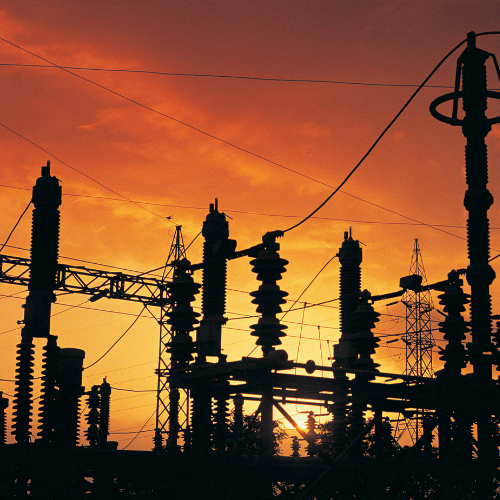
The Pro IQ Interview Series: Energy industry expert, Tim Duignan – part 2
In the first part of the series we spoke with Tim about growth leadership and maintaining organisational…
In the first part of the series we spoke with Tim about growth leadership and maintaining organisational effectiveness during periods of growth.
In the second part, Tim shares his insights into the future of power generation in Australia, the race to renewables and the abundant opportunities available in the Northern Territory.
RP: Can you give us an overview of what you think will happen with Australia’s electricity generation capacity in the coming years?
TD: Renewable energy is the future. That is inevitable. The only thing really holding it back at the moment is the storage component, whether that’s battery technology, hydrogen technology or some other technology as a storage element. But it is inevitable that renewables are the future and the fossil fuel powered generators are or will become a thing of the past.
RP: Is it inevitable because of public demand associated with climate change or is it also commercially driven?
TD: It started as what the public wanted but now it is absolutely commercial. The cost of generation out of a solar plant or a wind farm now is comparable to a coal fired power plant. Our gas fired power plants in the NT cost far more than a renewable plant, so renewables are commercially more viable and successful.
The majority of renewable energy in the NT currently comes from solar. However, the challenge is accounting for the percentage of the day when it is dark so the economics around the storage question are key to the future of solar as a reliable energy source. When the storage issue is resolved, there will be a more rapid race towards renewables.
Renewables are suffering a little bit because they are starting to hit saturation point in some areas and financiers are seeing that without cost-effective storage mechanisms, the risk of being curtailed in the marketplace will affect their investment returns. So, there is a difficulty in financing these projects as equity markets come to grips with the fact there’s no certainty of being despatched.
RP: Do the same storage challenges that face the wind and hydro industries also face the solar industry?
TD: Yes, storage is an issue for any of the intermittent generators, although less so for hydro. You have a level of storage in the hydro systems but for wind and solar it is definitely the question of smoothing out the intermittency and providing overnight coverage.
Solar has become cheaper than wind to produce. It also requires less maintenance. Across the life of a project, you don’t have the maintenance issues with solar that you do with a wind generator, making the cost of solar lower than the cost of wind over the long term.
RP: What about transmission and distribution companies? Many industry people are talking about getting people off the grid, micro grids and peer-to-peer trading. What do you see happening there?
TD: I think they become a market enabler, a platform in which people can trade across. It takes a very different approach to pricing and how they run their networks and the type of business they are in. But data will be a massive part of their business moving forward and the ability to mine and use that data to effectively set up the exchange of electricity across their networks.
RP: Do you see a time where electricity retailers are non-existent as we know them now?
TD: I think they will need to morph into something different. They will still exist but their business model will need to change to meet customer requirements. Customer needs are going to change drastically over the coming years. Organisations must respond to change or they will perish.
RP: What are the main opportunities for the Northern Territory?
TD: I think the main opportunity in renewables for the NT is solar. Central Australia north to Katherine has some of the best solar resources in the world.
The opportunity needs to be grasped by the government in the Northern Territory. It shouldn’t be looked at as anything different to any other resource. They’ve got a resource, it’s called sunshine and it’s one of the best in the world. There’s also plenty of flat, open ground to utilise. The big question is how do you take that resource and get it to market? New technologies are fast emerging, things like ammonia and hydrogen, innovations that will allow the NT to really exploit its abundant solar resources.
Some great opportunities have been identified by Mike Cannon-Brookes and Twiggy Forrest (Andrew Forrest, founder of the Fortescue Metals Group). They are looking at building a giant solar farm in the Northern Territory and exporting the electricity to Singapore. That’s a very ambitious project. The transportation of the electricity through to Singapore is the challenging part of it. (Read more about the project in Billionaires invest in giant Australian solar farm to supply power to Singapore.)
RP: Do you see the main opportunity being the means to provide cheaper domestic power rather than renewables being a big-ticket export for the region?
TD: I think there will be export but I’m not sure it will be through a dedicated cable to somewhere like Singapore that’s so far away. I think the export side of it will come as liquid hydrogen or ammonia or something like that.
I believe that the connection of a solar resource in Central Australia to an electricity grid will be to the national electricity market, not into somewhere like Singapore in the near term.
RP: Given the NT has a slightly different socio-economic climate, and a more dispersed population, can you see NT consumers benefitting more than consumers in say Brisbane or Sydney?
TD: I think so, particularly with so many remote communities. Suppliers are heavily subsidised by the government to supply electricity at the price the same as in Darwin for instance. The economics will change to the extent that they’ll move towards renewables, hydrogen and batteries in the coming years. Power for remote communities is already being supplemented by solar and batteries to load shift. That will happen more as technology, particularly the storage component, makes higher percentage solar penetration more economically viable.
If you have big hubs in the Northern Territory for solar hydrogen projects or solar ammonia where someone cracks ammonia as a fuel source, small communities may be able to utilise hydrogen or ammonia off the back of these big projects to run their systems instead of diesel.
RP: Are the main challenges more with government vision and governments embracing the change?
TD: I think governments are struggling with the concepts. The Northern Territory government is struggling with the concept but they are also struggling with the finances. It’s going to take the private sector to step in to fund some of the early adopter projects, which can be a challenge.
RP: Does the region have a challenge in terms of the availability of skilled leaders and executives who can drive these changes?
TD: The Northern Territory always struggles with attracting high quality talent. I think the appeal of pioneering opportunities in the region is starting to attract the talent required to achieve the desired outcomes. There are some very good and capable people in the NT right now. It just requires a bigger vision by governments and the attraction of private funding into the sector.
RP: How do you think the NTEM may impact the NT?
TD: The NTEM has been coming for a long time. I think a national electricity market in the Northern Territory is a wise thing. However, the timing needs to be carefully considered.
The electricity industry, particularly the generation sector, is going through more change in a sense since the invention of electricity. I’m not sure it is a good time for the NT to put an electricity market in when there seems to be market failure in other areas of the country because of the inability of the market regulators to move fast enough to evolve the market in line with the new technology and the disruption that brings.
For the NT, I believe the initial focus should be on the transition to renewable energy and achieving renewable energy targets. Then focus on an electricity market in around ten years – after they’ve achieved the 50% renewables target. The renewable projects could be on power purchase agreements that all expire at the same time in the future into a fully-developed market that people can see and touch and feel.
RP: What have you seen over the last 12 months in terms of progress towards this new vision?
TD: In the NT, a number of new solar projects have been announced. 25 MW of solar is being built at Katherine, supported by the Northern Territory government through a PPA with Jacana Energy. A further two projects have agreements in place with Jacana that have been signed off by the government. That’s 45 MW of solar or about 15% of the maximum NT demand.
There’s going to be a fairly rapid shift towards solar in the Northern Territory and I think the biggest challenge is going to be the ability to despatch all that solar into what is effectively the regulator networks. There are pretty weak regulator networks in Alice Springs and Tennant Creek. Darwin and Katherine networks are more robust but still relatively weak in comparison to the national Electricity Market. There will be issues with regards to the amount of power that can be brought into the networks without other supporting technologies to ensure the security and stability of the grid is maintained.
The target is 50% renewables by 2030. I don’t think the Northern Territory will have any problem achieving that. The only challenge is cost-effective storage. Simple maths has about 33% of the day as harvestable sunshine. When you move beyond that, you need something that’s cost effectively able to shift about 17% of the energy into the night. The ability to shift loads is key to the success of renewables.
Related Blogs
Salary Survey: Ensure your company remains a magnet for top talent
In today’s dynamic business landscape, staying competitive in the job market is essential. It is imperative to ensure that your employees are not only fairly compensated but also that your…
The Pro IQ Interview Series: Critical Minerals Association Australia, Namali Mackay
Our latest feature in the Pro IQ Interview Series is a conversation with one of the Founders and Managing Director of the Critical Minerals Association Australia, Namali Mackay. Here she describes…
Unleashing Potential: The Significance of Assessing Candidates’ Behavioural Competencies
In today’s fiercely competitive job market, executive search consultants face the challenging task of identifying individuals who not only possess the right skills and qualifications but also demonstrate the essential…
Who are your most irreplaceable employees?
Who are your most irreplaceable employees? – the Importance of Organisational Network Analysis In today’s fast-paced business world, retaining key employees is a top priority for organisations. But, while…




